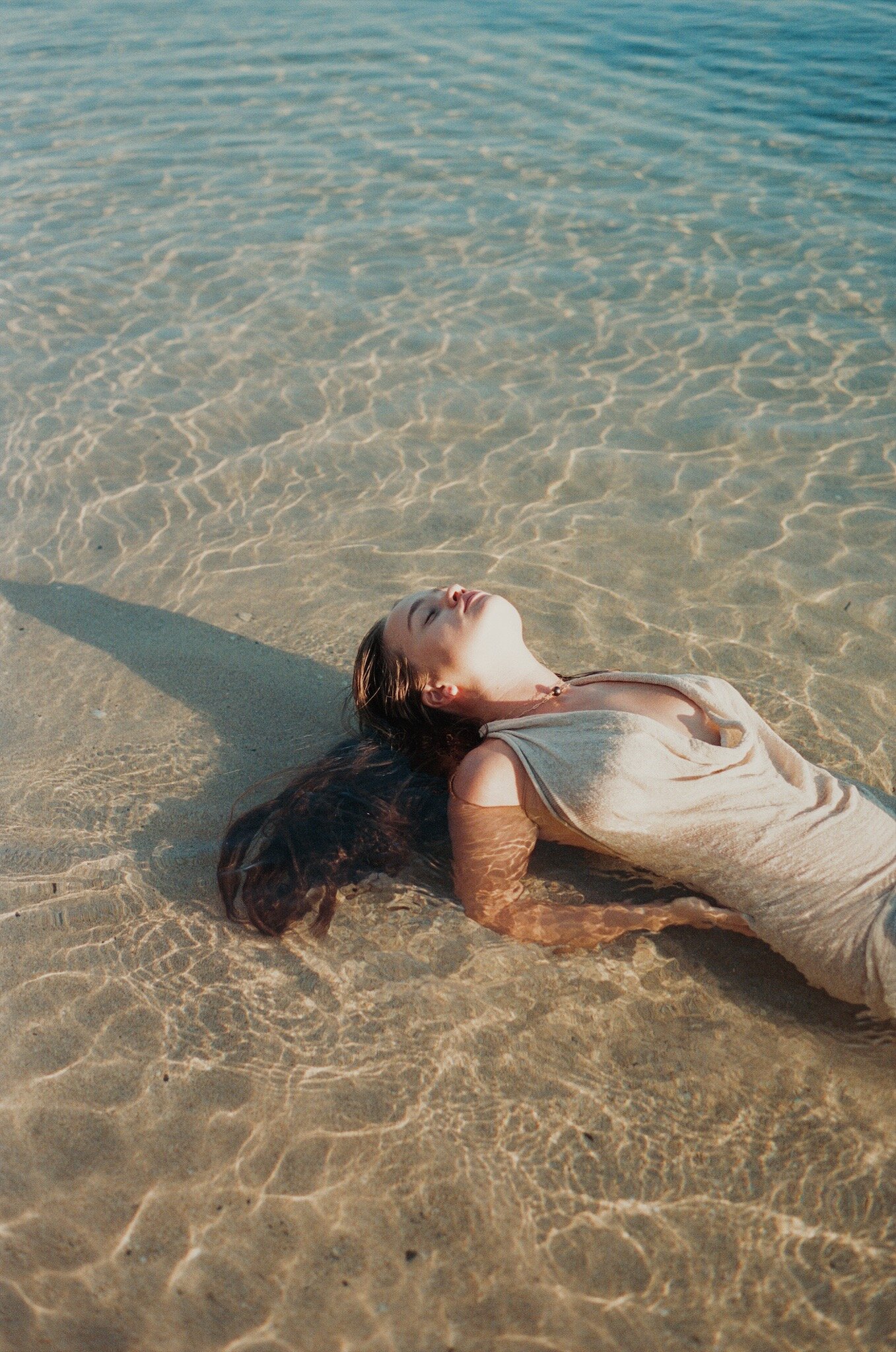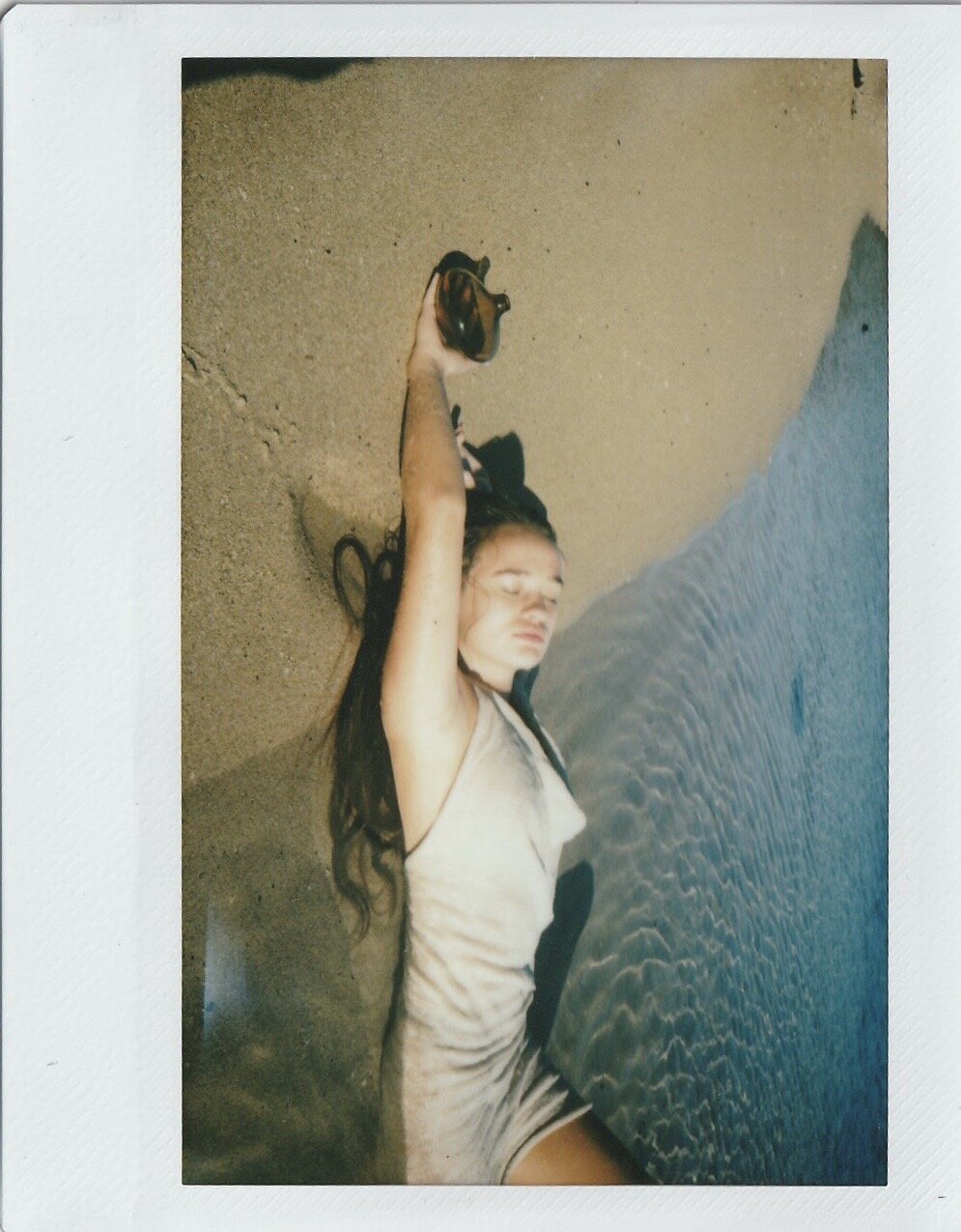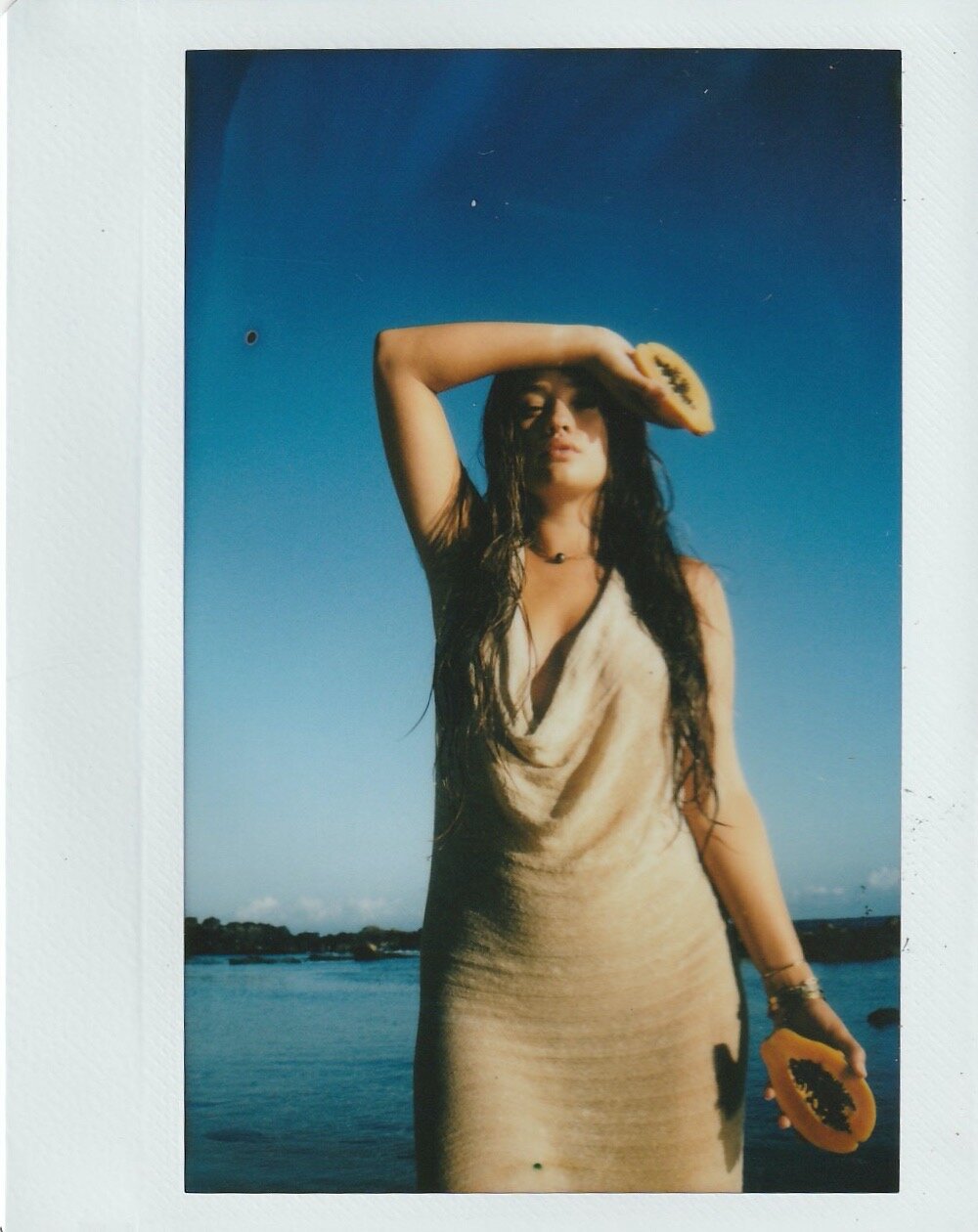Mermaiding Around in Nullabor Collective
In conversation with Winona Bedford, discussing her brand, her creative process and the inspiration she gathers from the world around her.
It is said that if inspiration does not come to you, you should go halfway to meet it. I’ve always found that my creative juices flow best when I’m inspired by what I do not know—the idea that everyone has something to teach and something to offer to me has always allowed me to search further on a hunt for a creative spark. At HOKU, we’ve always made it our mission to seek inspiration from creatives who are willing to share their art with us. When connecting with designer and creative director, Winona Bedford, founder of Nullarbor Collective, the creative spark we felt was immediate.
Operating through raw organic cotton, neutral hues and a low waste hand dyeing process, each Nullabor piece is crafted to a dreamy perfection— bringing us back to a summer oasis we never want to leave. Each nostalgic collection is not only illustrious on its own, but each timeless piece is made consciously every step of the way. Just how we like it. And lucky for us, we got to connect closely with Winona to learn the ins and outs about what sets her brand apart from the norm in the best way possible.
Tell us more about how Nullabor Collective came to be?
I was working as an advertising and film producer, and had never actually shown an interest in the fashion industry but always had a creative heart. I was working in London, and had a sudden memory of my mother from when I was a child. When I was younger, my mum would make dresses in the backyard using organic cotton, hand dye the pieces then sell them at the markets. It was crazy, but I had an urge to bring this vision back to life. I was in Dubai and made the decision to move to Sri Lanka to start this project. My dream was to find women in remote villages of Sri Lanka, empowering them with work by teaching them the process of the designs.
I sold everything I had, moved to Sri Lanka on a one way flight, and as soon as I arrived I was instantly inspired to create. As my mother did, I began making designs in the backyard of my house in the jungle, using the organic cotton to create different designs and experimenting with natural dyes.
I then began riding my bike around the villages, finding older women who were out of work. I taught the women this new designs, and showed them the process of how to create each individual piece.
From then on, everything came to life. It was as if it was all meant to be. I found boutiques on the island that wanted to stock the creations, as a producer I had the skills to create photography and video content of the creations. I then began building the website and social page.
I fell in love with the design process, of using this organic and raw material to create authentic creations. It was so strong in my heart to create a sustainable business model that chose to give back to this world, understanding that as a brand I had a voice to impact change.
An ethical approach, that continued to always put the people of the brand first, to give opportunities of work for women who would not have usually been given the opportunity for financial freedom.
When I was living in Sri Lanka, I came across an all girls orphanage in the jungle. I began teaching the children music and art. I saw such a growth in their confidence and joy in their hearts from the process of creation. The same art of healing I had experienced from designing Nullarbor Collectives pieces. I made a decision then to donate 15% of all Nullarbor Collective profits to empowering children in orphanages through art therapy.
The project is one so close to my heart, I love the art of creating each design with knowing it is also empowering women around the world. All I can hope for is that every woman who wears a Nullarbor Collective design feels the divine love and healing in the creation.
What inspires each collection? Can you tell us more about the worldly inspirations that are reflected in each collection?
Nullarbor Collective is inspired by the exquisite world we live in. Each design collection has been inspired by a place or person who has inspired me while traveling.
The conscious collection, features nomadic style pieces made for the conscious being in us all. Sophisticated, minimalist, and timeless pieces.
I then launch new collections every season inspired by the places of the world I have recently been inspired by. Most recently, I launched the Maldives and Sri Lanka Collection. I am now working on an Australian inspired collection, being back home in Australia has inspired me to work on a collection inspired by the authentic nature and uniqueness of this beautiful country.
Nullarbor Collective pieces are created for the powerful, real, divine and fierce woman. The organic cotton is incredibly raw, and soft wearing. Made to appreciate every figure, and to be worn with devotion. Creations that work with the realness of a woman’s body was so important to me, each creation is made to fit all shapes and sizes. The material stretches out and works for your body, rather than against it.
Tell us more about how you keep your pieces and process sustainable?
Every design is made using raw organic cotton, all left over material is used to make scrunchies or bags. No wastage and full transparency on the creation process.
The hand dyed creations are dyed using sustainable low impact dyes, with very little water usage. I will only use one back of water for an entire collection, and never waste any dyes. All left over dyes are used to create new designs. I love working with constraints, as when we have less it allows us to be more creative in the process. Living in Sri Lanka, I would make clothing racks for boutiques with bamboo found in my backyard.
The production process of each creation is slow, yet detailed to ensure there is the least impact possible on the environment. The process of shipping is also an important factor of the production process, it is crucial as a sustainable business owner to ensure the least carbon footprint.
The vision of Nullarbor Collective is to continue creating production line’s in other remote villages around the world, as there is no use of mass factories in the business model. I recently travelled to India, working with women in the villages there to show them the creation process and offer work for those in need. By working with individual women in their homes or small groups, this ensures less carbon footprint that would occur when running a large scale warehouse.
The packaging process is another aspect that is crucial in creating a long-term sustainable business model. I have now invested in compostable biodegradable postage bags, as well as recyclable boxes for packaging and clothing tags made from recyclable paper.
These small conscious decisions, all though they make the process more detailed and refined, have a massive long - term impact on this world. As sustainable business owner, I will always seek the option most beneficial for this beautiful planet we live on.
Tell us more about the women of your brand, and how Nullabor embraces diversity.
The women I work with are from remote villages, who have in the past found it very difficult to find work. They are not wanting to work in mass factories, or have to pay for transport. And I seek to get to know every woman I work with on a personal level.
While I was in Sri Lanka I was working with the women I had employed so closely that I rented a room from their family, just so I could live there and work one on one with them in their homes during the first design stages. I went to their family gatherings, birthday’s and celebrated traditional holidays with their extended family. This to me creates inclusivity, I believe a sustainable fashion brand should always seek to know the heart of every individual apart of the process of making the vision come to life, and it allowed me to see what working environment would work best to suit their lifestyle, while providing them with financial and creative freedom. In Sri Lanka, there are many well known high end brands who have mass manufacturing warehouses. The women have to catch the bus for hours to get into work, to work in terrible conditions on low pay. They spend half their daily wage on just transport.
In western countries, we have the opportunity to have a work from home life balance.
I wanted to create this for the women of Nullarbor Collective. Where they could be given financial freedom, but also work on their own terms. To create a life where they could still have the freedom to enjoy time with their families, which especially in Sri Lanka is such a strong priority in their daily lives. I worked with women in their homes, using old beautiful singer sewing machines, they then would tell me how many hours they would like to work for the week, and they can choose when they want to work. It created a process of honesty and integrity, and allowed every women to have a higher quality of life.
As the business grows, I am aware that there will need to be different business approaches to be considered, but what is strong on my heart is to stay clear from mass manufacturing warehouse factory environments. And to know every employee on a personal level, seeing what working approach best suits their lifestyle. This is understanding diversity, that not every approach is the best for every person. Different lifestyles, and cultures create different perspectives which as a business owner should always be considered. Every decision made with a caring and compassionate heart.
As women who are so deeply intertwined with our own brand, we are so inspired to see the initiative and diving feminine energy come from all of the inspiring women we have the opportunity of learning from. As the fashion industry continues to evolve, learn and grow, there is no doubt that consumers from all over the world will be impacted. Brands like Nullabor Collective are paving the way for women in the industry while also highlighting the necessary change that needs to happen. Not only are Nullabor Collective’s pieces thoughtfully designed and incredibly timeless, but they also represent the ever-evolving industry we’re in— a rallying call for diversity and inclusion and a glimpse into a dreamy future we can’t get enough of.
This editorial was shot entirely on film using polaroids + 35mm film / Kodak Portra 160.
Model: @haoleprincess
Words: Kiana Kanoa
Photos: Kiana Kanoa
Behind the Scenes Videography: Daevry Calibuso










